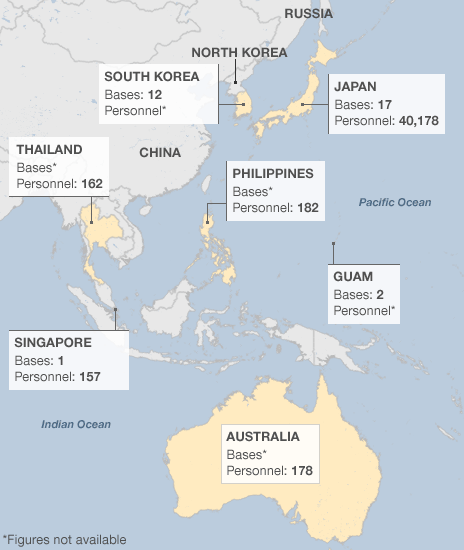The Pentagon will begin flying surveillance drones off the coastlines of Japan, China and Taiwan, an agreement reached after talks between Defense Secretary Leon Panetta and Japanese Defense Minister Satoshi Morimoto at the Pentagon on Sunday.
The unmanned aerial missions will focus on a Pacific island chain called the Diaoyutai Islands, which have become the focal point of a simmering territorial dispute between China and Japan. Even Sen. John McCain, one of the biggest hawks in Congress, called the deployment “unnecessarily provocative.”
In keeping with the Obama administration’s antagonistic military postures towards China, the US has backed various neighboring countries from Japan to the Philippines. And it’s no surprise drones have taken a larger role in what the Pentagon plans to make a new military theater of Air-Sea Battle.
New war strategies called “Air-Sea Battle” reveal Washington’s broader goals in the region and illustrate how a war with China – which the US apparently yearns for – would play out.
“Stealthy American bombers and submarines would knock out China’s long-range surveillance radar and precision missile systems located deep inside the country,” reports theWashington Post. ”The initial ‘blinding campaign’ would be followed by a larger air and naval assault.”
The Obama administration has been ramping up the pressure on China with an increasingly antagonistic foreign policy. The so-called ‘Asia pivot’ is an aggressive policy that involves surging American military presence throughout the region – in the Philippines, Japan, Australia, Guam, South Korea, Singapore, etc. – in an unprovoked scheme to contain rising Chinese economic and military influence.
Chinese officials have not appreciated this unprovoked bellicosity. In May the Chinese Defense Ministry accused the Pentagon of hyping a Chinese military threat out of thin air. Others have said these Pentagon moves could start an arms race.
“If the U.S. military develops Air-Sea Battle to deal with the [People’s Liberation Army], the PLA will be forced to develop anti-Air-Sea Battle,” one officer, Col. Gaoyue Fan, said last year in a debate sponsored by the Center for Strategic and International Studies, a defense think tank.
A recent report from the Center for Strategic International Studies predicted that next year “could see a shift in Chinese foreign policy based on the new leadership’s judgment that it must respond to a US strategy that seeks to prevent China’s reemergence as a great power.”
“Signs of a potential harsh reaction are already detectable,” the report said. “The US Asia pivot has triggered an outpouring of anti-American sentiment in China that will increase pressure on China’s incoming leadership to stand up to the United States. Nationalistic voices are calling for military countermeasures to the bolstering of America’s military posture in the region and the new US defense strategic guidelines.”



